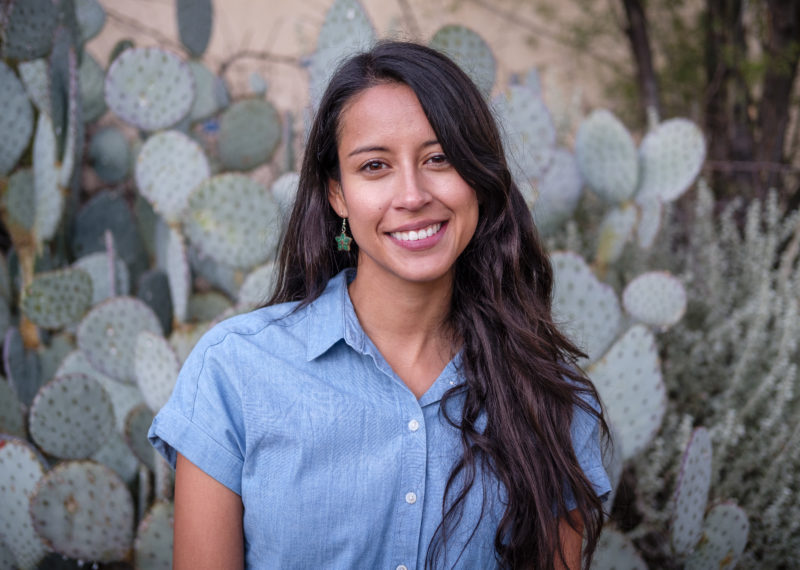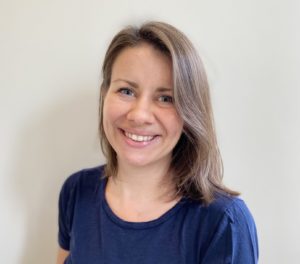Climate change is a women’s issue. Women are far more likely to be displaced by climate disasters and are more vulnerable to the economic shocks and increased gender-based violence that accompanies a warming planet. Research also shows that climate change increases the risk of pregnancy complications. Yet women are responsible for fewer carbon emissions than men and are still vastly outnumbered in boardrooms, governments—and even in leadership positions in climate research and advocacy.
But women often lead frontline communities as they develop solutions to the climate crisis, says reporter Jessica Kutz. Kutz, the new gender, climate and sustainability reporter for The 19th, a nonprofit newsroom, says her beat is about telling a fuller story of the climate crisis. “There are a lot of stories that just haven’t been told yet,” she said.
This conversation has been edited for clarity.
In what ways does the climate crisis disproportionately affect women and nonbinary people?
People are increasingly aware that you can’t separate the fight for climate justice from the fight for gender equality. You can’t solve one problem without addressing the other.
We know that the climate crisis impacts different groups of people disproportionately, but coverage of this usually focuses on race or socioeconomic factors. Women, though, make up a higher percentage of low-income people. They’re also disproportionately the primary caregivers of children. When you take those factors into consideration, it changes the story in terms of how many women are able to adapt or respond to a natural disaster or the climate crisis—something that people with higher economic means can often shield themselves from, to a degree.
It’s also why some women’s advocacy groups think demanding pay for caregiving work should be part of the Green New Deal, because, at the moment, the transition to clean energy is expected to mainly create jobs for men. If childcare were more affordable, or paid for by the government, it would ease one of the burdens for women looking to enter the workforce.
There’s a growing body of scientific work around the impacts climate change can have on pregnant people. It’s harder for pregnant people to thermoregulate, for example, so if you’re in a heatwave—or simply living in a place that’s hotter than it once was—that can increase the likelihood of preterm labor, low birthweight or even stillbirth.
As for the LGBTQ+ community, there’s research that came out last year about the ways in which LGBTQ+ communities are more vulnerable in the aftermath of natural disasters that I thought was fascinating. Much of the non-government response to disasters comes from religious organizations and faith-based groups. Some in the LGBTQ+ community would be uncomfortable reaching out to, or even be denied services from, groups that might have espoused homophobic views—and that leads to unequal access to aid. Separately, I just recently spoke to someone who brought up that having identity documents that don’t match your gender can make it more difficult after a disaster to access housing, medical care and more. This is something I look forward to doing more reporting on.
What does it mean to cover the intersection of gender and climate? How might you approach your beat differently from a more traditional climate reporter?
This beat is a lot about reporting on structures that uphold power for certain parts of our society while perpetuating inequality.
Part of it is thinking about the ways in which climate change weighs unevenly on women and the LGBTQ+ community, but it’s also thinking about who influences policy making. From the Intergovernmental Panel on Climate Change (IPCC) to officials in federal and local governments in the U.S., of course, it’s historically white men who have an outsized voice in making decisions that play out differently on the ground for some groups than for themselves.
One of my first stories for The 19th was about how, for the first time this year, women made up more than 40 percent of the lead authors of this February’s IPCC report—and the continuing gender bias those women at the IPCC face. If you don’t have the perspectives of women and LGBTQ+ communities at high levels of policy making, then inevitably the problems being highlighted or solutions being put forth are not going to take into account how climate change uniquely impacts them.
So the challenge, but also the fun part, of my job is always taking climate news one step further and thinking about how it relates to gender. There are in fact so many grassroots organizations, researchers and scientists that have been looking at climate change in this intersectional way for a long time. They’re very excited that journalists are finally looking at this topic. There are a lot of stories that just haven’t been told.
Are there ways women can uniquely be a part of climate solutions?
At High Country News, I covered a lot of environmental and social justice groups, and I found that women are often leading a lot of these, especially in frontline communities. For example, I wrote about a Phoenix woman, who, after learning of neighbors who died from heat exposure, started working with the city’s parks department to host free pool parties where officials also handed out information about the dangers of heat.
I hesitate to attribute this leadership to some specific, maternal trait, but given women’s societal role as caregivers, it’s women who are often closer to the problem of how climate change is really affecting people. They’re more aware of ways the environment is impacting their children’s health, certainly. That means they’re often the defenders against air pollution and fracking, and that relates back to being in tune with the health of their communities. That said, not everyone embraces women’s role in climate solutions; I recently wrote about how grassroots environmental organizations led by women of color do important work and yet are incredibly underfunded.
What are you learning in this new role that might be useful to other climate reporters?
It’s important to think of “gender” outside of just women. That means thinking of people who also identify as trans or nonbinary members of the LGBTQ+ community. It means thinking of the roles we assign to people in society based on their gender. It means thinking about intersectionality.
For example, there was a story recently in The New York Times about how air pollution is disproportionately impacting communities that were previously redlined. Last week, I talked to a doctor who said that there are higher rates of asthma [diagnoses] in boys, but that more women die from asthma attacks than men. These differences might be physiological but it made me wonder if women in these communities are more vulnerable to deadly asthma attacks because of this pollution. Wildfire pollution is another contributor to asthma attacks I am starting to think about, too. I haven’t reported this out yet but it’s an example of how I might look for a gender angle.
So, if you take the question [on a given topic] one step further, there is usually a gendered angle to climate stories. As with any story where you see a racial or economic vulnerability, just ask yourself, if there’s an additional way to think about this that could explain how women or LGBTQ+ people are being impacted differently.
I’d also tell other reporters to think about incorporating gender into their reporting in a more holistic way. Even if their story isn’t explicitly about that angle, did they reach out to women scientists or researchers for example? There are plenty of reporting tools and databases that make doing this work easier. Use them.
This story was made possible by a grant from the Open Society Foundations.


